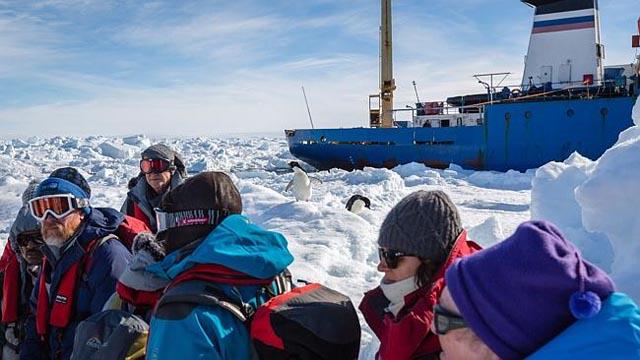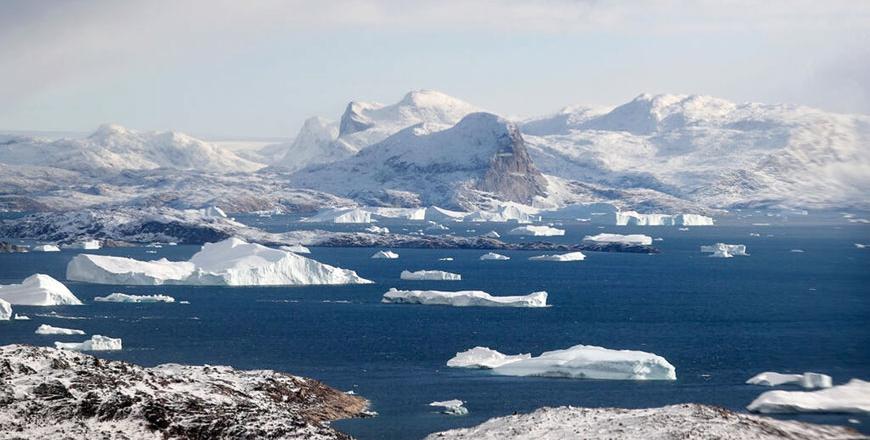You are here
Half of world’s small glaciers expected to vanish by 2100
Jan 24,2023 - Last updated at Jan 24,2023

An ice block drifts after breaking away from the Nordenskiold glacier, near Pyramiden, in Svalbard, a northern Norwegian archipelago on September 21, 2021 (AFP photo)
WASHINGTON — Half of the Earth’s glaciers, notably smaller ones, are destined to disappear by the end of the century because of climate change, but limiting global warming could save others, according to a rececnt study.
The findings, published in the journal Science on Thursday, provide the most comprehensive look so far at the future of the world’s 215,000 glaciers.
The authors emphasised the importance of restricting greenhouse gas emissions to limit the consequences from glacier melt such as sea level rise and depletion of water resources.
To help orient policy makers, the study looked at the impact of four scenarios on glaciers, where global mean temperature change is 1.5ºC, 2.0ºC, 3.0ºC and 4.0ºC.
“Every degree increase produces more melt and loss,” said Regine Hock of the University of Oslo and University of Alaska Fairbanks, a co-author of the study.
“But that also means if you reduce the temperature increase, you can also reduce that mass loss,” Hock told AFP. “So in that sense, there is also a little bit of hope.”
Even if global temperature rise is limited to 1.5ºC above pre-industrial levels — the most ambitious goal of the Paris Agreement — the researchers estimated that 49 per cent of the world’s glaciers would vanish by the year 2100.
That would represent about 26 per cent of the world’s glacier mass because the smallest glaciers would be those first impacted.
Global mean temperature is currently estimated to be increasing by 2.7ºC which would result in a near-complete loss of glaciers in Central Europe, Western Canada and the continental United States and New Zealand.
“Regions with relatively little ice like the European Alps, the Caucasus, the Andes, or the western US, they lose almost all the ice by the end of the century almost no matter what the emission scenario is,” Hock said. “So those glaciers, they’re more or less doomed.”
Under the worst-case scenario — global temperature rise of 4ºC — giant glaciers such as those in Alaska would be more affected and 83 per cent of glaciers would disappear by the end of the century.
Glacier loss would also exacerbate sea level rise.
“The glaciers that we are studying are only one per cent of all ice on Earth,” said Hock, “much less than the Greenland ice sheet and the Antarctic ice sheet.
“But they have contributed to sea level rise almost just as much as the Greenland and Antarctic ice sheet together in the last three decades,” she said.
Warming of 1.5ºC would lead to an increase in average sea levels of nine centimetres while temperatures 4ºC higher would cause 15 centimetres of sea level rise.
“It doesn’t sound very much, nine centimetres up to 15 centimetres,” Hock said, “but it’s not global sea level that is that much of a concern.
“It’s mostly associated storm surges,” she said, which have the potential to cause “a lot more damage”.
The disappearance of glaciers will also have an impact on water resources because they provide freshwater for some two billion people.
“The glaciers compensate for the loss of water in summer when it’s not raining much and it’s hot,” Hock said.
The study’s projections, which are more pessimistic than those of UN climate experts, were reached through observations of the mass of each glacier through the decades and computer simulations.
Despite the alarming findings, Hock said “it is possible to reduce the mass loss by human action.
“If it happens is of course a different question,” she said. “If that happens is of course up to the policy makers.”
Related Articles
PARIS — A rapidly melting glacier atop East Antarctica is on track to lift oceans at least two metres, and could soon pass a “tipping point”
The melting of ice in the Antarctic is considered a top threat to global sea level rise, and scientists said Thursday the trend could continue for decades or even centuries to come.
PARIS — Even without any future global warming, Greenland’s melting ice sheet will cause major sea level rise with potentially “ominous” imp














